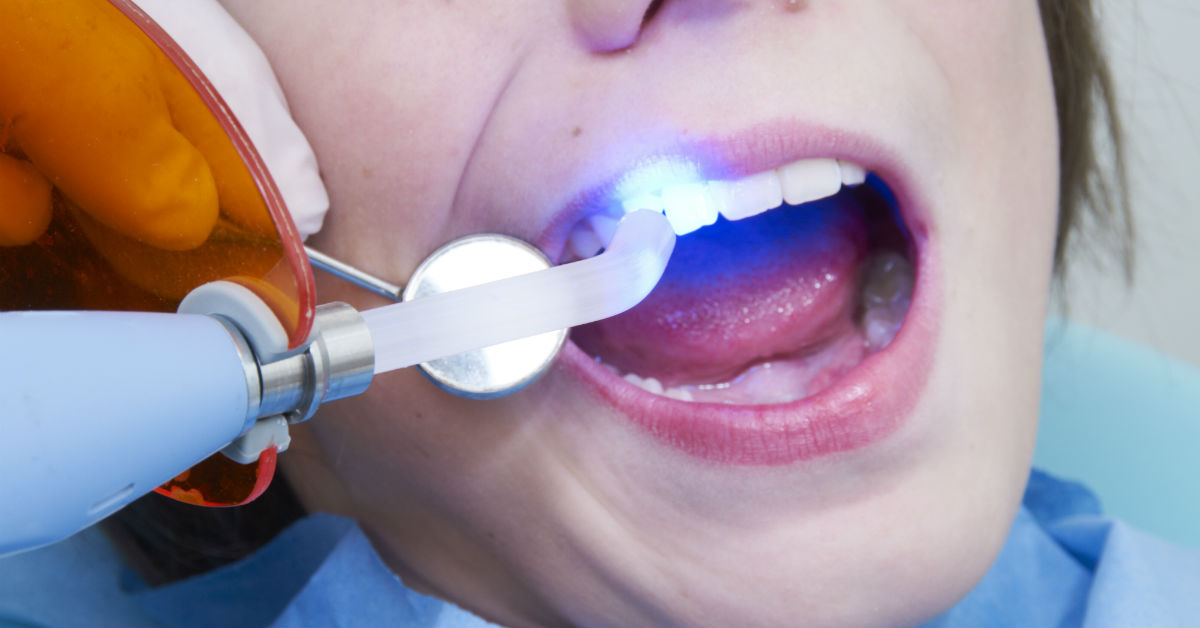
Cavities are the enemy! Not only can they wreak havoc in your mouth, poor dental health can affect your entire body. Gingivitis and Periodontitis can increase your risk for heart disease and diabetes. As you probably already know, good oral hygiene habits are your best defense — daily brushing and flossing. Another tool we use to fight cavities is dental sealant.
What is a dental sealant?
It is a thin, protective coating, most often made from plastic, glass ionomer or resin that covers your tooth. It protects tartar and plaque from forming on your teeth. Sealants prevent bits of food from settling on your teeth and creating holes.
Dental sealants are typically placed only on molar teeth. This is because there are the teeth that are more susceptible to decay. We use molars to tear and chew food which makes them the perfect place for leftover food particles to breed bacteria. The anatomy of molar teeth also makes them more susceptible to dental caries. Molar teeth have pits and fissures and 80 percent of all cavities occur in these areas.
Sealants can be used on non-molar permanent teeth but it is less common. If for some reasons your non-molar tooth has any pronounced grooves or divots, it may be a candidate for a sealant.
Sealants are usually clear but they may have a white tint. Still, they’re nearly invisible.
History of Dental Sealants
Dental sealants have been preventing cavities since they were approved by the American Dental Association back in 1976. Dental Research Firm AFG estimates that 55 million-plus dental sealants are applied each year in the United States by pediatric dentists. And the good news is that the disparity in dental sealants for lower-income children vs. higher-income children is decreasing. The number of low-income kids with sealants has increased by 70 percent in the last decade according to the CDC. That percentage increase is responsible for 1 million less cavities!
Dental Sealants have become a community health initiative for many states as they establish school-based dental sealant programs. 21 states currently have state sealant programs. Five states in particular have been running sealant programs for 10+ years and have seen great success: Illinois, New York, Ohio, South Carolina and Wisconsin.
Do Dental Sealants Really Work?
We will let the statistics do the talking here!
- According to the American Dental Association, sealants have been shown to reduce the risk of decay by 80 percent in molar teeth.
- The Center for Disease Control reports that children that do not have sealants are have approximately 3 times more cavities than their peers who do have them.
- The American Dental Association says that resin-based sealants can reduce cavities for up to four years after placement by 60 percent or more.
- Animated-Teeth.com reports that studies have shown that only 11 percent of teeth that received sealants developed a cavity while 52 percent of the teeth with no sealants developed cavities.
While sealants have amazing benefits, the CDC reminds us that they are a part of a cleaning plan, not your entire dental hygiene routine.
When Should I Get a Dental Sealant?
In an ideal world, the earlier you get dental sealants the better! Many children receive them on their first set of permanent molars that pop up around age 6. According to the CDC, currently 30 percent of children ages 6 to 11 have sealants and 40 percent of adolescents ages 12-19 have sealants.
Sometimes dental sealants are recommended for baby teeth. Baby teeth set the stage for future permanent teeth so when they are lost too early it can cause problems.
Adults can also benefit from sealants too! It’s never too late to prevent and protect. Sealing teeth is always better than waiting for a cavity to form and then having to drill into teeth.
The key is that you need to apply the dental sealant before any signs of decay. Or if there is decay, it needs to be removed completely before applying a sealant.
Dental Sealant Process
Unlike dealing with a cavity, getting a dental sealant is quick and pain free. We clean and dry the tooth, place an acidic gel on it. This gel roughens up the tooth and provides the foundation for a strong bond to form. Then we rinse off the gel, dry the tooth completely and apply the sealant closely to your tooth. Then we cure it with a special blue light.
Is is it safe?
Some have raised concerned about BPA contained in sealants. BPA is a chemical that is used to make plastics and resins. While large amounts of BPA can be harmful the amount present in dental sealants in low. In fact, you are exposed to more BPA by the foods you eat or touching a store receipt than in dental sealants.
Will it hurt?
If you ask someone who has had a dental sealant if it was painful, they will almost always say no. Colgate describes them as “virtually painless.” You know what does hurt? Cavities, fillings and root canals.
How long do they last?
A well placed dental implant can last for up to 10 years. We always check your sealants at regular dental check-ups to make sure they are still intact and functional.
How much do they cost?
The average cost for dental sealant is between $30-$40 per tooth. And some insurance companies do cover them as preventative care. The best way to find out if your particular insurance policy covers them is to call and ask. Before placing them on your teeth, we can give you a very good idea of what your insurance will cover and what your out of pocket expense would be.






 (435) 656-4441
(435) 656-4441 826 S 3000 E Ste 2
826 S 3000 E Ste 2
Leave a Reply